Hugo Canoilas uses the tradition and history of painting and object art to redefine and expand the connection between installation and performance strategies. Along with art history,he also references sociopolitical developments and the philosophical and art-theoretical discourses it involves.
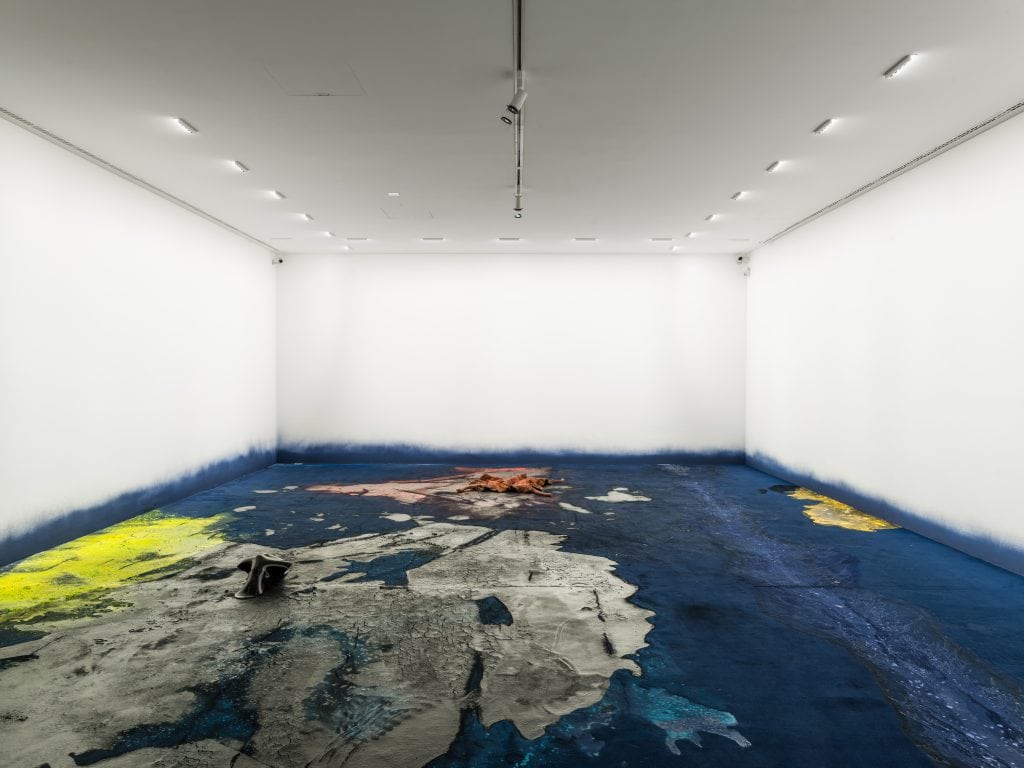
The departure points are interconnected topics such as the climate crisis, environmental degradation, and the ever-widening gap between poor and rich countries,whose virulence is spurred on by the corona-virus pandemic.The artist ties his work in with these developments and their effects first and foremost in posthumanist schools of thought that call a rigid anthropocent-ric,hierarchical worldview into question and call for a careful and egalitarian human treatment of nature and its creatures.
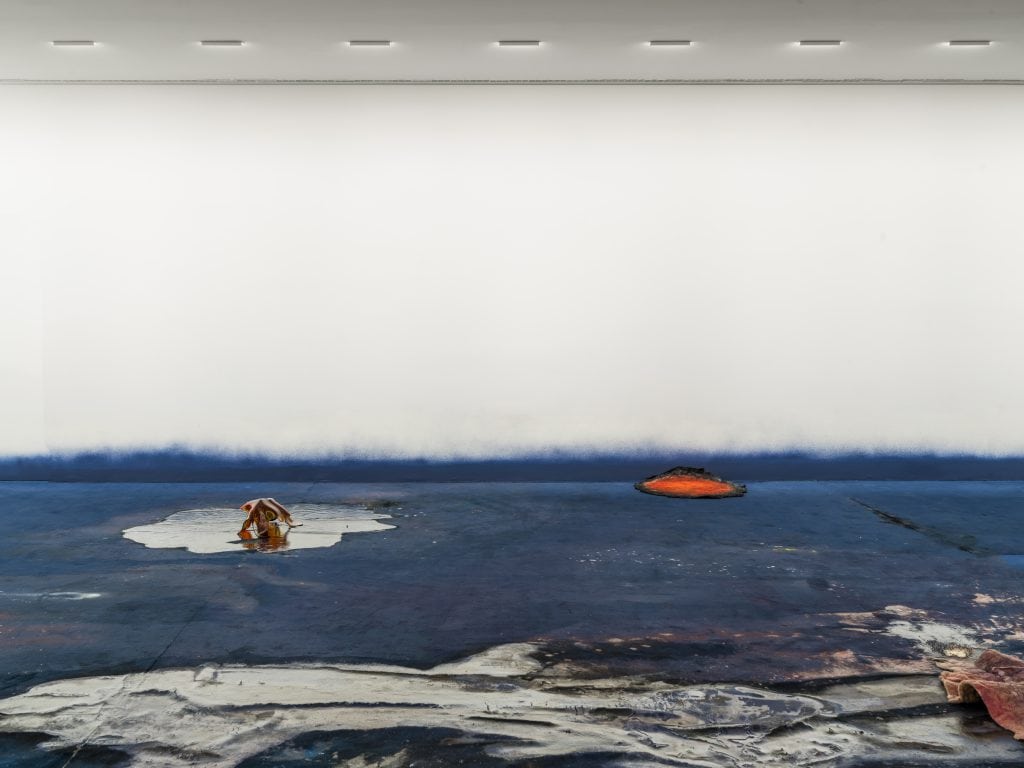
In the context of this new empathetic worldview, Canoilas gives painting an altered form and function: In this exhibition he tilts it to the horizontal plane and constructsit as a walk-on floor work. Spread out across the textileground is a painterly scenario of confluent forms with insular centers. The blue ground and the colorful, prehisto-ric-looking, jellyfish-like tentacular creatures made of wool and glass remind viewers of densely populated maritime landscapes of unfathomable depths.
In a time when keeping one’s distance is the survival principle du jour, viewers find themselves im-mersed in an inescapable biosphere where temptation and menace,the organic and the technoid coexist. Viewing the paintings below one’s feet from above also reminds one of digital landscape scenarios like the ones photographed by drones. The change of perspective may be understood metaphorically as a departure and distancing from trained social perceptions and behaviors to approach things with adifferent mindset and perhaps indeed get closer to the heart of the matter.
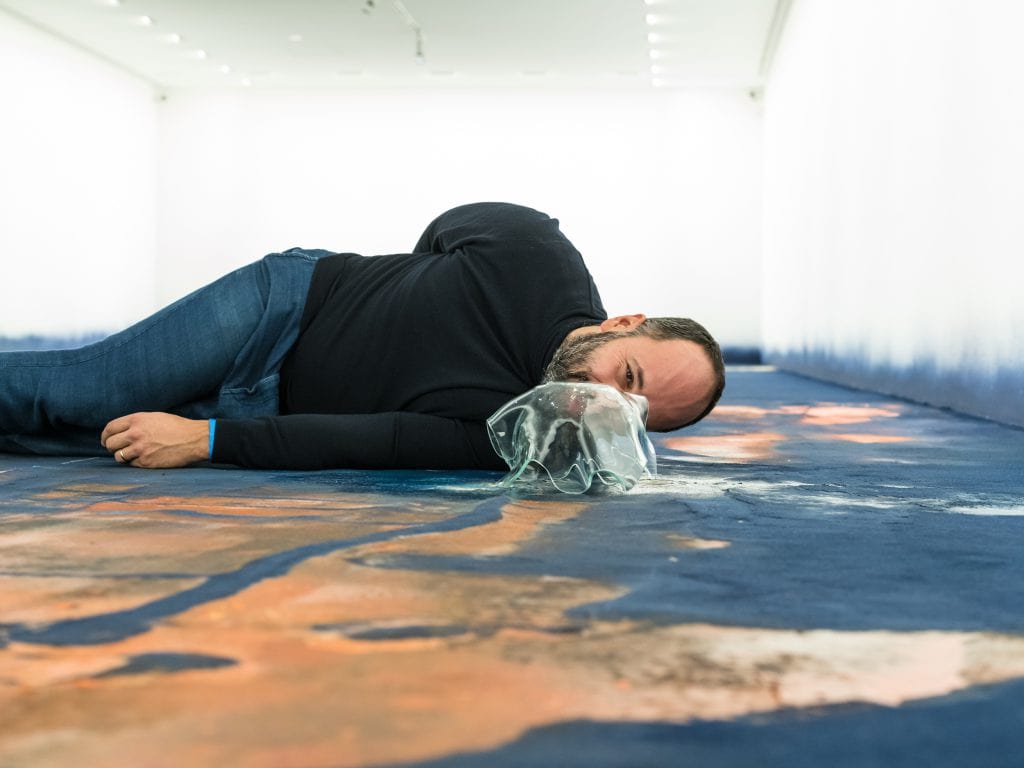
The exhibition is also the venue for a performance Elise Lammer and Julie Monot have developed on the artist’s invitation, entitled BECOMING DOG, which questions the hierarchical relationship between humans and animals, replacing it with the prin-ciple of empathy in an institutional space. Actors dressed as dogs intermittently use the painting as a stage. As creatures that usually sniff their way across the ground, they embody the intent to qualify the upright gait and stereoscopic vision as the mea-sure of all things. Human and animal traits seem blended like in a drag show to put ostensible certainties about identity and uniqueness up for discussion.
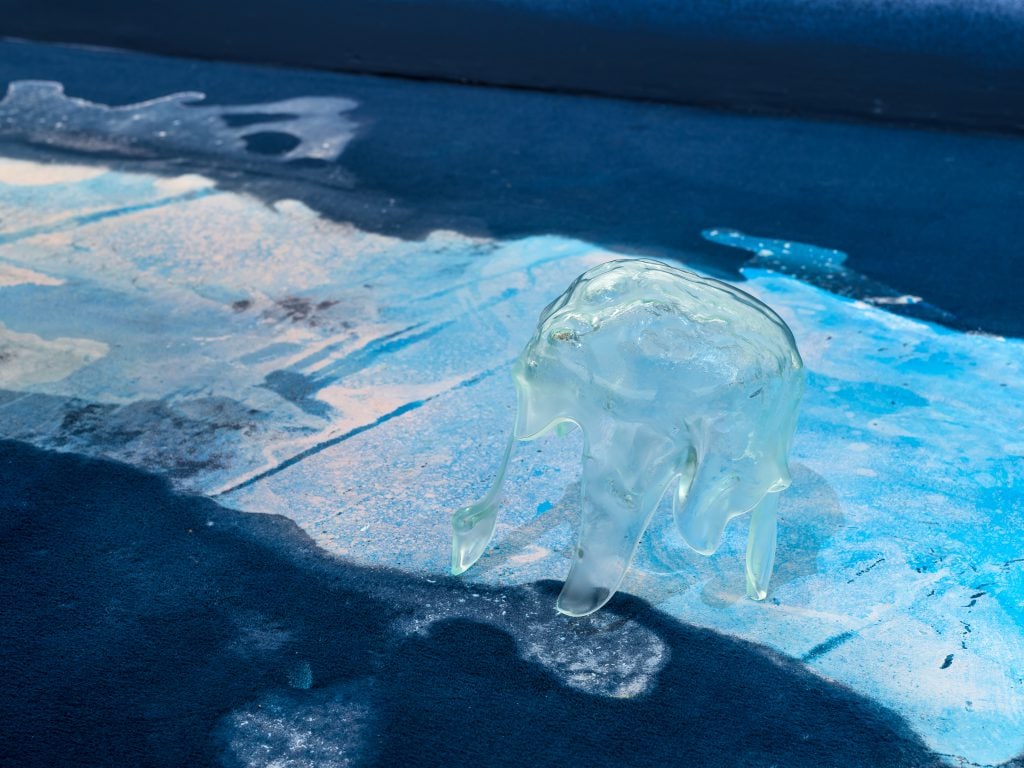
Curated by Rainer Fuchs
Ausstellungsansichten / Exhibition Views: Hugo Canoilas-On the extremes of good and evil, Kapsch Contemporary Art Prize 2020/2021Photo: Klaus Pichler© mumok/ Klaus Pichler
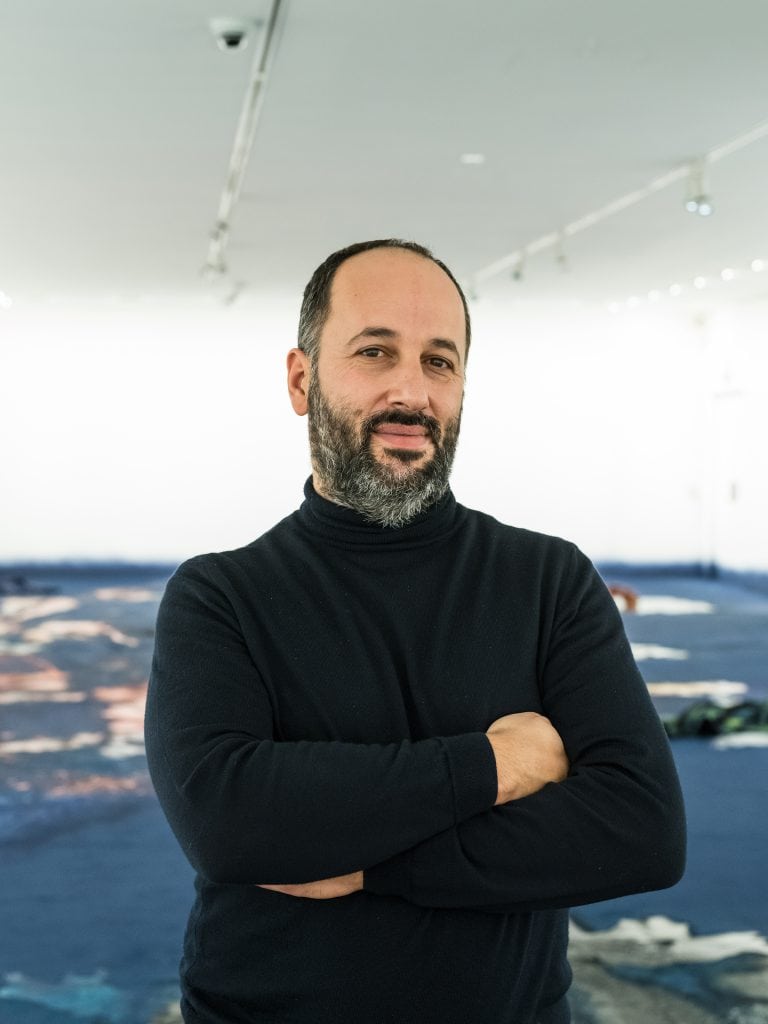
Hugo Canoilas
Born 1977 in Lisbon, Hugo Canoilas has been living and working in Vienna since2010.He studied at ESAD (Escola Superior de Artes e Design) in Caldas da Rainha and at the Royal College of Art in London.
Exhibitions (selection): Museu do Chiado,Lisbon; Cooper Gallery,Dundee; Centro de Arte Contemporáneo de Huarte; Frankfurter Kunstverein; Kunsthalle Wien; De Appel, Amsterdam; Museu Calouste Gulbenkian,Lisbon; 30th São Paulo Biennial; 4th Ural Industrial Biennial.
Porträt / Portrait Hugo Canoilas, Photo: Klaus Pichler©mumok / Klaus Pichler
The Kapsch Contemporary Art Prize is an award that promotes young artists based in Austria and was initiated by the Kapsch Group and mumok in 2016.After Anna-So-phie Berger (2016),JulianTurner (2017),Ute Müller (2018),and Anita Leisz (2019), Hugo Canoilas is its fifth recipient.Honored with a prize money of 10,000 euros,the prize includes a solo exhibition at mumok and a catalog published in conjunctionwith it.Additionally,one of the recipient’s works or work groups is purchased by theKapsch Group for the mumok collection.
Jury
Each year,art experts are asked to nominate two artists each for the Kapsch Contem-porary Art Prize. In 2019, this group of experts included Anne Faucheret, curator at Kunsthalle Wien, Cosima Rainer, Head ofthe Art Collection and Archive at the Univer-sity of Applied ArtsVienna, and Thomas D.Trummer, Director of Kunsthaus Bregenz. An international jury composed of Brigitte Huck, art historian, curator, and art critic; SusanneTitz, Director of Museum Abteiberg, Mönchengladbach; Vitus Weh, dramaturg and scenographer; Georg Kapsch, CEO of Kapsch Group; and mumok Director Karola Kraus selected the winner.
Jury Motivation
“From the numerous submissions distinguished by their high quality,the jury reached the unanimous decision to award Hugo Canoilas with the Kapsch ContemporaryArt Prize 2020/2021.Canoilas’s oeuvre is highly energizing: In his hands,old pictorialtechniques are reinvigorated,obsolete artificial languages saved by reenactment,and spaces turned into stages as they begin to breathe.His unusual installations and images,videos,and performances are all characterized by a laid-back opulence yet no stylistic definition.Caniolas’s things are in constant flux.At the same time,he has an inimitable knack for connecting people:TheViennese exhibition space Guimarães,which is run by him,is an important hub for the young local art scene as well as transients,”the jury stated.

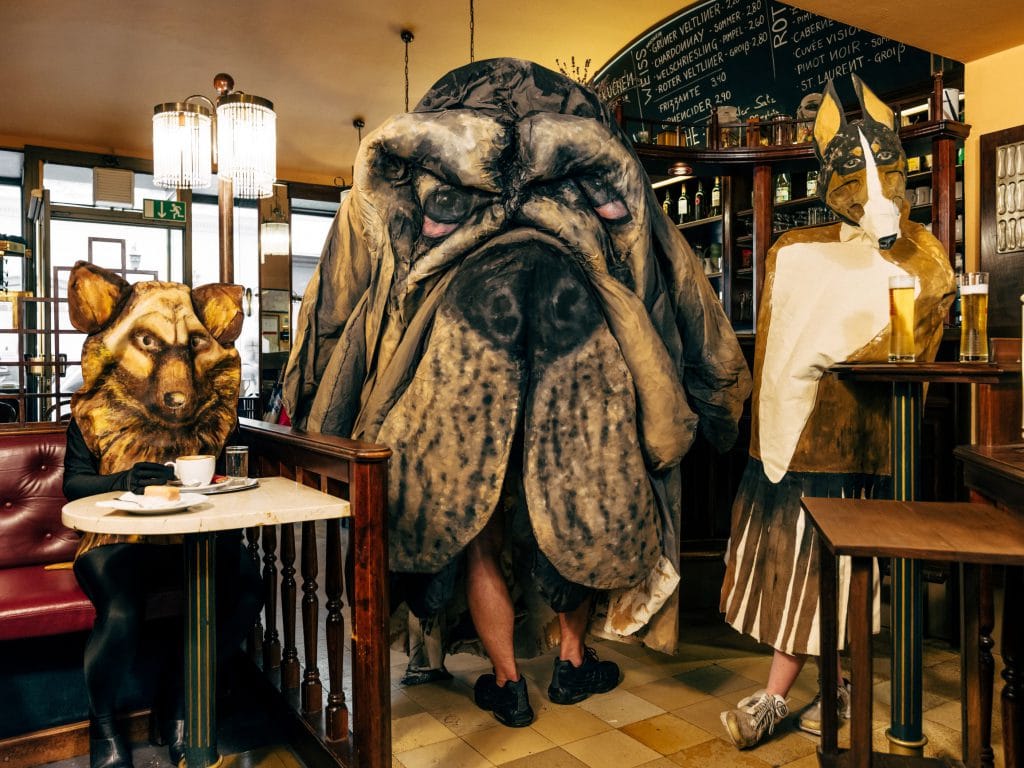
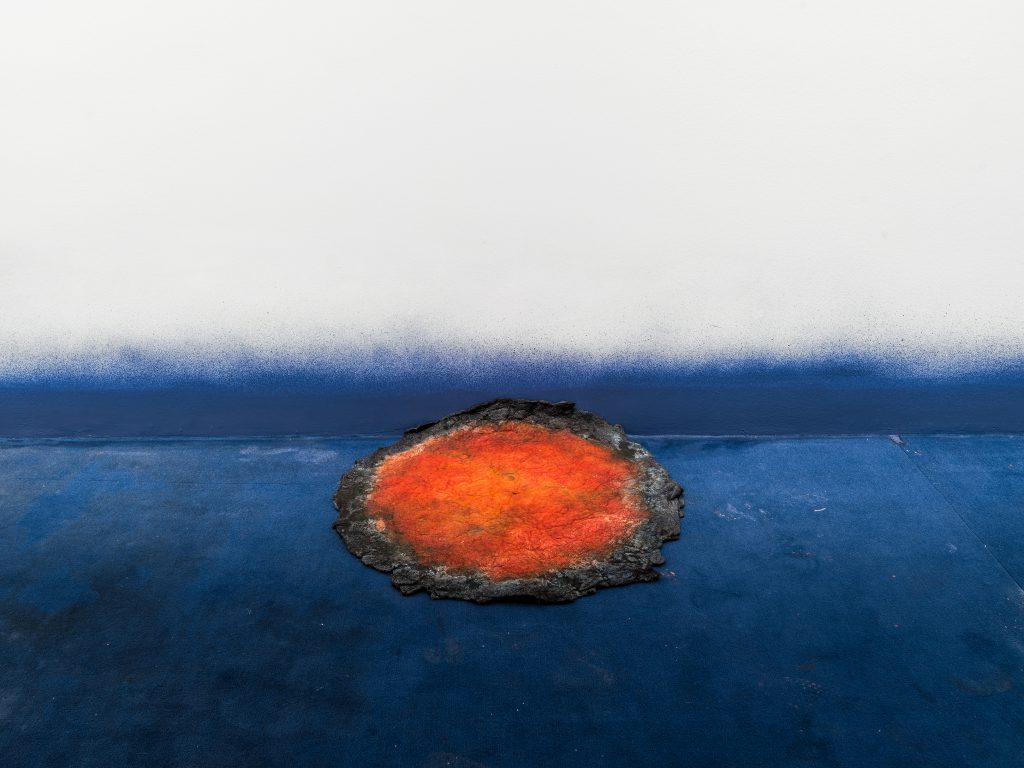
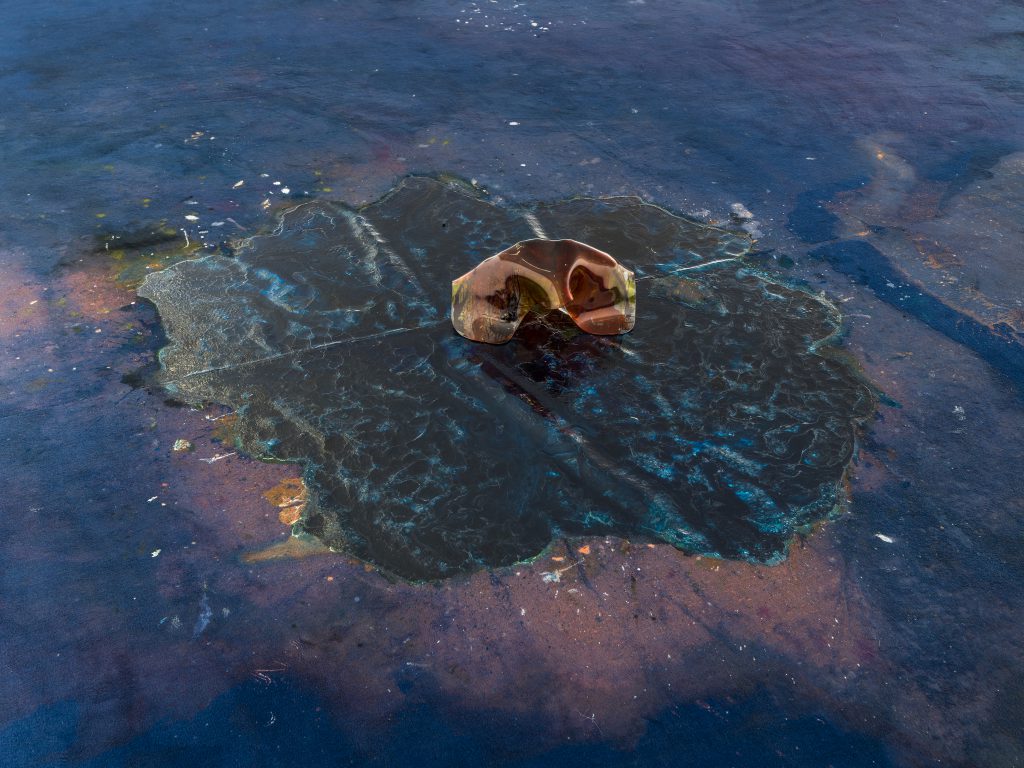
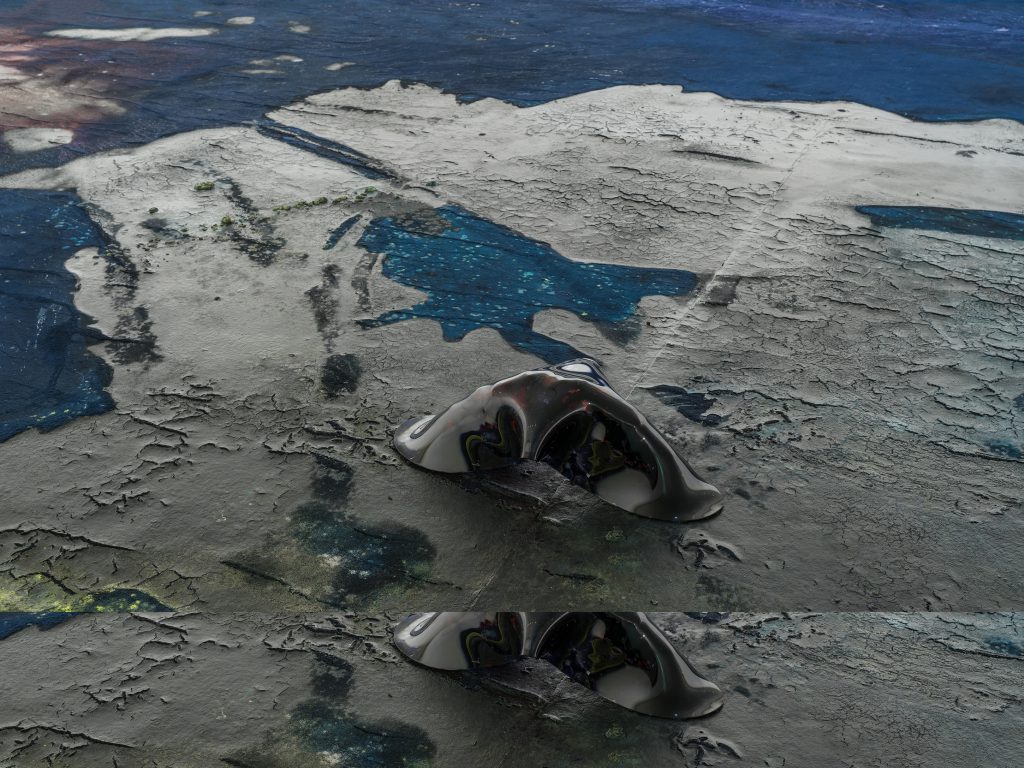
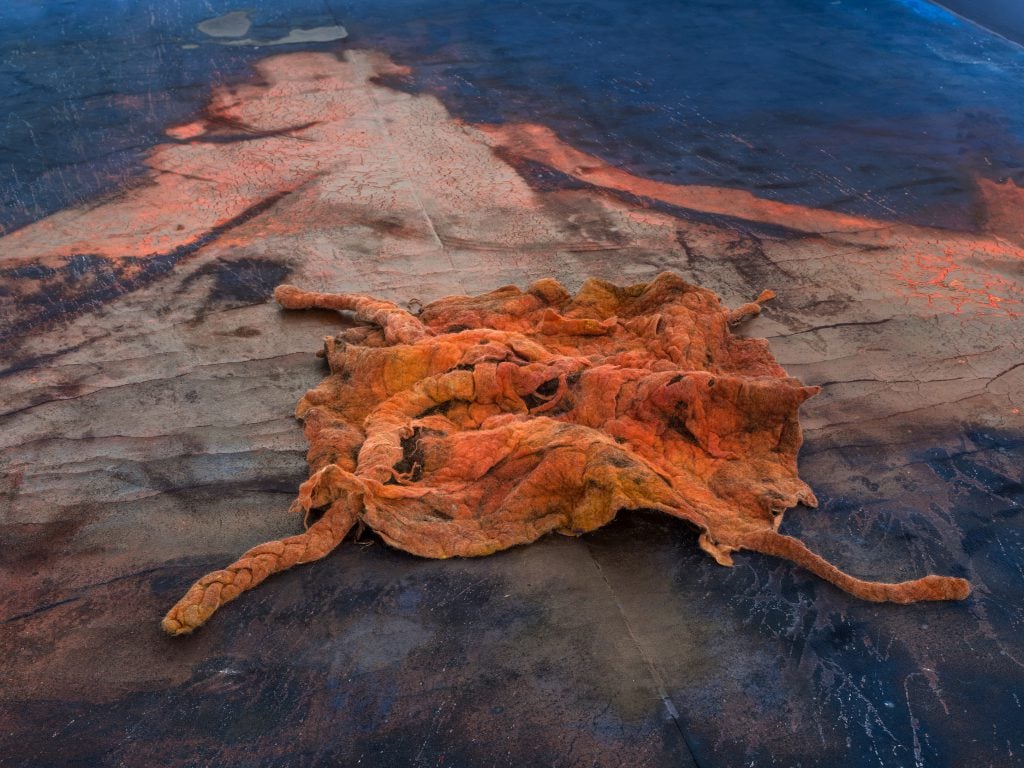
iThere are no comments
Add yours